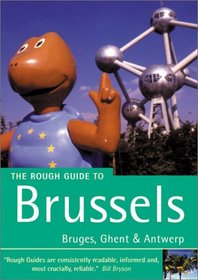Search -
The Rough Guide to Brussels 2 (Rough Guide Mini Guides)
The Rough Guide to Brussels 2 - Rough Guide Mini Guides
Author:
INTRODUCTION Amongst Europeans, Brussels is best known as the home of the EU, which, given recent developments, is something of a poisoned chalice. But in fact, the EU neither dominates nor defines Brussels, merely forming one layer of a city that has become, in postwar years at least, a thriving, cosmopolitan metropolis. It?s a vibrant and fas... more »
Author:
INTRODUCTION Amongst Europeans, Brussels is best known as the home of the EU, which, given recent developments, is something of a poisoned chalice. But in fact, the EU neither dominates nor defines Brussels, merely forming one layer of a city that has become, in postwar years at least, a thriving, cosmopolitan metropolis. It?s a vibrant and fas... more »
ISBN-13: 9781858286839
ISBN-10: 1858286832
Publication Date: 1/7/2002
Pages: 330
Edition: 2nd
Rating: ?
ISBN-10: 1858286832
Publication Date: 1/7/2002
Pages: 330
Edition: 2nd
Rating: ?
0 stars, based on 0 rating
Genres:
- Travel >> Europe >> Belgium >> Brussels
- Travel >> Reference >> Guidebooks
- Travel >> Guidebook Series >> Rough Guide




